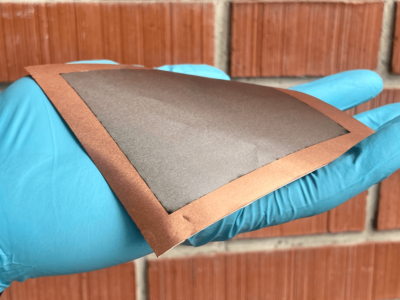
Magnetic sensors enable directional temperature measurement
The research team focused on increasing the energy efficiency of information storage devices based on magnetic tunnel elements. It was found that the elements can be sensitized to temperature changes from desired directions by the targeted selection of magnetic properties.
The principle is: A temperature difference at the magnetic element generates an electrical voltage from top to bottom. This voltage is influenced by the magnetization of the element. In this way the stored information is determined by the direction of magnetization. The strongest signal for reading stored information is generated when the temperature difference is in exactly the same direction. If the temperature difference changes direction, for example from right to left, the measurement signal for each magnetization also changes diametrically. This difference forms the measurement signal, which indicates the direction of the heat source.
These sensors have a size of a few micrometers, with a thickness of less than 10 nanometers. In principle, they can be further reduced in size. The magnetic layers are applied by sputtering, from which the elements are then formed using lithography processes. Both are standard processes in the semiconductor industry. This allows the elements to be easily integrated into computer processors, for example. There they can help to avoid the overheating of certain areas. This in turn would improve the runtime stability of processors.
The study “Experiments on giant thermal magneto-galvanic effects in magnetic tunnel junctions” was carried out as part of a project of the Priority Program “Spin Caloric Transport” (SpinCaT, SPP 1538) of the German Research Foundation (DFG). The project involved scientists from the universities of Greifswald, Bielefeld, Göttingen, Groningen and the Leibniz Institute for Solid State and Materials Research in Dresden. The research results are reported in the journal Nature Communications Physics 1, 65, 2018.
 If you enjoyed this article, you will like the following ones: don't miss them by subscribing to :
eeNews on Google News
If you enjoyed this article, you will like the following ones: don't miss them by subscribing to :
eeNews on Google News




